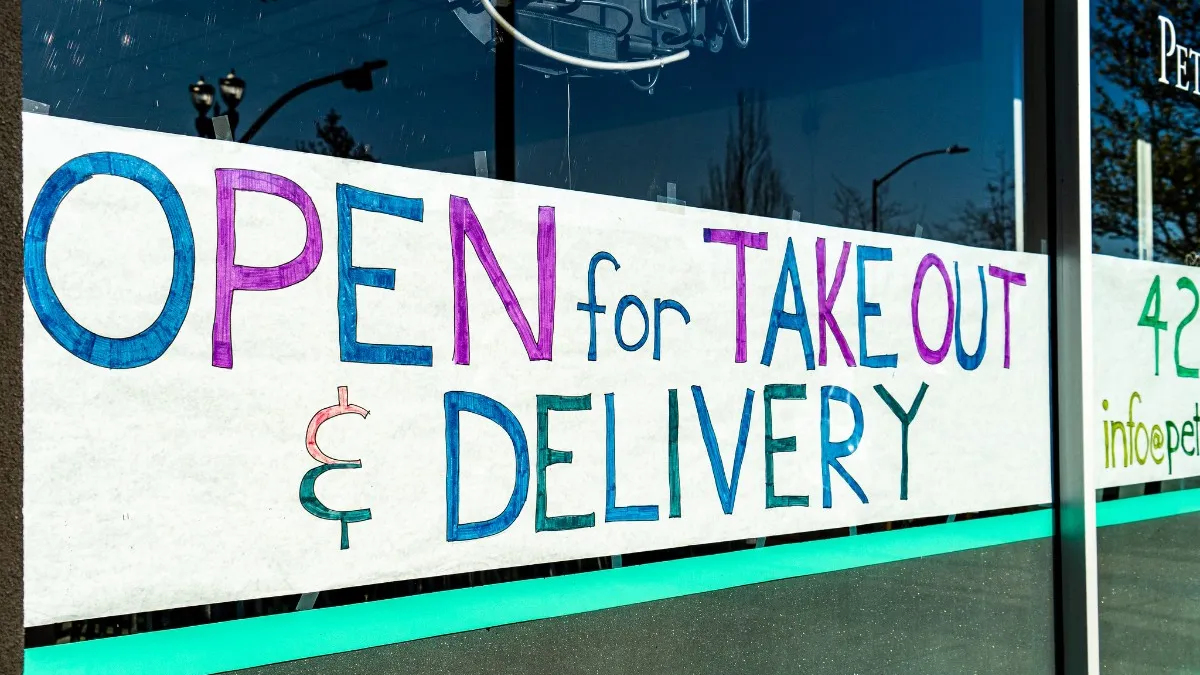Dive Brief:
- Seventy-four percent of diners cite convenience as the top driver of off-premise consumption, and nearly half of diners report they are more likely to order directly from a restaurant if it's an easy process, according to a new report from digital restaurant platform BentoBox and restaurant discover platform The Infatuation.
- Forty-four percent of consumers surveyed said they're more likely to order directly from a restaurant if there is a promotion or discount, while the same percentage said they like to order directly because it benefits the restaurant during the pandemic. Thirty-seven percent of diners will order through whichever channel has the lowest fee. Younger consumers are more likely to act on promotions and discounts for delivery orders and are also more deterred by delivery fees.
- Nearly 90% of diners were ordering delivery or takeout at least once a week before the pandemic, and individuals between 25 and 34 years old were the heaviest off-premise consumers. Now, 84% of consumers currently order delivery or takeout and 57% order delivery or takeout once or twice a week.
Dive Insight:
As most diners plan to continue their off-premise consumption habits post-pandemic, this study underscores the importance of restaurants offering a channel where consumers can order from them directly.
Nearly eight in 10 consumers will continue to order delivery in the near future, even as restrictions lift, outdoor dining opens up more and vaccines are administered, per BentoBox and The Infatuation. Owning a frictionless delivery channel could save restaurants double-digit commission fees per order, which are typical of charges that come with third-party delivery partnerships.
This research complements recent data from SevenRooms showing that 48% of consumers believe it's cheaper to order directly from a restaurant than through a third-party delivery platform. According to that report, third-party platforms take a 30% commission from restaurants on average. SevenRooms estimates that a direct ordering solution would save about $54,000 for a high-end New York Italian restaurant that generates $216,000 in delivery orders in six months, for example. Another recent report from VROMO finds that restaurant chains that manage their own deliveries can boost their profitability by as much as 30% per food order.
Money saved from avoiding third-party commission fees could be used to create promotions and discounts to further drive direct delivery orders and habituation. It could also be used to enhance the direct ordering process and make the channel easier for consumers to navigate. Both of these moves could be critical for restaurants hoping to sustain direct delivery orders through their sites in the event that desire to support restaurants fades as the pandemic ebbs.
It's also worth noting that third-party delivery isn't going away. The pandemic more than doubled third-party delivery app revenue between April and September 2020 even as consumers are more mindful of ordering directly from restaurants and as they have more options to do so. Despite the channel's growth, however, delivery only accounts for roughly 9% of all restaurant orders, according to the NPD Group, which is a 154% increase year-over-year from 2020. This leaves a lot of runway for even more off-premise proliferation both by restaurants and third-party platforms.









